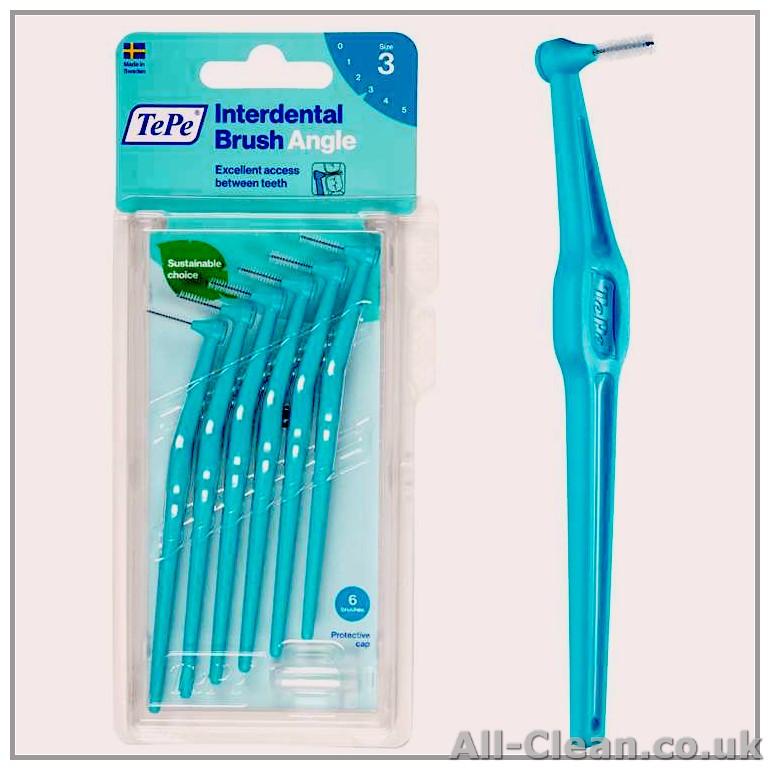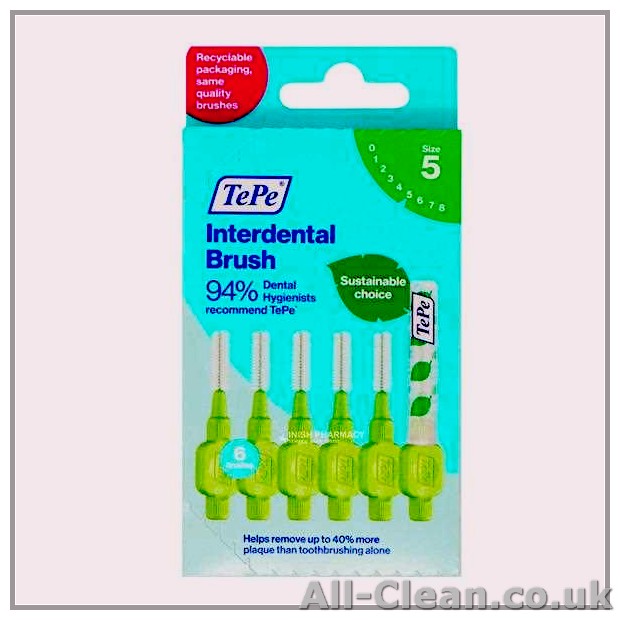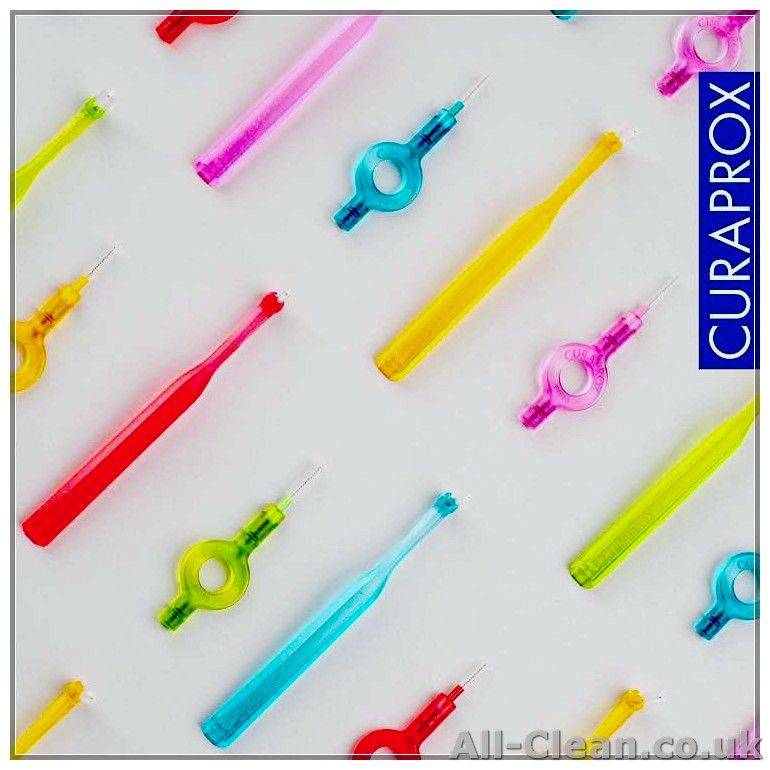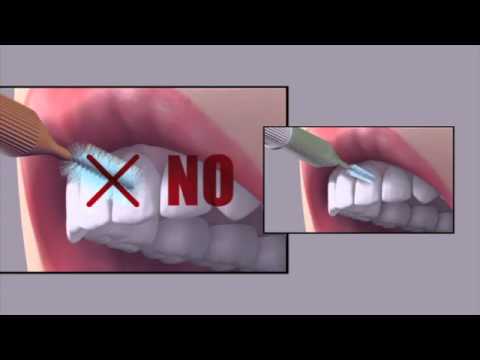
March is here, and it’s time to start thinking about spring cleaning – not just for your home, but for your teeth as well! If you don’t already use interdental brushes as part of your oral hygiene routine, then now is the perfect time to start.
Interdental brushes, also known as interproximal brushes, are small brushes specifically designed to clean the spaces between your teeth. They are a great alternative to traditional flossing, especially if you find it difficult to use regular floss or if you have larger gaps between your teeth.
So, what makes interdental brushes so great? Here are 5 reasons why you should start using them today:
1. Prevent Gum Bleeding: One of the first signs of gum disease is bleeding gums. Regular use of interdental brushes helps to remove plaque and food particles from between your teeth, preventing gum disease and reducing the likelihood of bleeding gums.
2. Better Plaque Removal: Interdental brushes are more effective in removing plaque than just brushing alone. The bristles of the brush can reach areas that your toothbrush can’t, ensuring a thorough clean and reducing the build-up of plaque.
3. Improved Dental Health: By using interdental brushes, you can ensure that your teeth and gums stay healthy. It helps prevent cavities, gum infections, and bad breath, and it can also enhance the effectiveness of other dental cleaning products you use, such as toothpaste and mouthwash.
4. Easy to Use: Interdental brushes are simple to use and navigate between your teeth. They come in different sizes to fit your individual needs, and you can easily carry them with you for on-the-go cleaning. Just a few minutes each day can make a big difference in your oral health.
5. Recommended by Dentists: Many dental professionals recommend interdental brushes as a vital step in oral hygiene. They are effective in removing plaque and food particles, and they can help reduce the discomfort associated with gum disease.
So, why wait any longer? Start using interdental brushes today and give your teeth the extra care they need. Your dentist will thank you!
- Archives Categories
- 1. More effective cleaning than brushing alone
- 2. Helps prevent gum disease
- 3. Works along with floss
- 4. Different sizes and options
- 5. Archives of recent posts
- How Often Do I Need to Do It
- What Is Interdental Cleaning
- Why is interdental cleaning important?
- How to clean interdental spaces
- When and how often should you clean interdental spaces?
- How to use interdental brushes
- How to Use Dental Floss
- What Should I Use to Clean Between My Teeth?
Archives Categories
If you’re looking to find more information about interdental brushes, you’ve come to the right place. In this category, we have compiled all our posts related to interdental brushes, so you can easily access the information you need.
Interdental brushes are an excellent tool for cleaning the spaces between your teeth, which is often difficult to reach with a regular toothbrush. But why should you use interdental brushes?
1. More effective cleaning than brushing alone

Interdental brushes are designed specifically to clean the gaps between your teeth. Unlike a toothbrush, which can only clean the surface of your teeth, interdental brushes can reach into the tight spaces and remove food particles, plaque, and build-up that might be missed by brushing alone.
2. Helps prevent gum disease

When food and plaque accumulate between your teeth, it can irritate your gums and cause inflammation. By using interdental brushes, you can effectively remove these harmful substances and reduce the risk of gum disease. Regular use of interdental brushes can keep your gums healthy and prevent discomfort or bleeding.
3. Works along with floss
Interdental brushes are not meant to replace flossing, but rather to complement it. While flossing is essential for cleaning between your teeth, interdental brushes can be used to clean larger gaps or areas where floss cannot reach. By using both floss and interdental brushes, you can achieve a thorough and comprehensive cleaning of your teeth.
4. Different sizes and options
Interdental brushes are available in various sizes to accommodate different gaps between your teeth. Whether you have tight spaces or wider gaps, there is an interdental brush size that will suit your needs. Additionally, there are different types of interdental brushes, such as angled or straight brushes, to make cleaning even more effective.
5. Archives of recent posts
Here, you can find recent posts about interdental brushes, including tips on how to use them, what to expect, and the best practices for incorporating interdental brushes into your oral hygiene routine. Browse through the archives to learn more and stay updated on the latest information.
So, if you’re wondering whether you should start using interdental brushes, the answer is yes! They are a valuable addition to your dental care routine and can significantly improve your oral health. Start using interdental brushes today and experience the difference!
How Often Do I Need to Do It
Using interdental brushes is an important step in maintaining good oral health. But how often should you use them?
The frequency of interdental brush use will depend on your unique dental needs and your dentist’s recommendations. However, the general guideline is to use interdental brushes at least once a day.
Brushing your teeth alone cannot reach the tight spaces between your teeth. This is where interdental brushes come in handy. They are specifically designed to clean between the teeth and along the gum line, reaching areas that regular toothbrushes cannot access.
The use of interdental brushes helps prevent the build-up of plaque and food particles between your teeth, reducing the risk of cavities, gum disease, and bad breath. Regular use of interdental brushes can also improve the effectiveness of your overall oral hygiene routine.
Some people may find it difficult to insert interdental brushes between their teeth at first, and there may be slight bleeding or discomfort. However, with practice and the right technique, these issues should diminish over time.
If interdental brushes do not work well for you or if you experience frequent bleeding or discomfort, you may need to consult your dentist about other cleaning options. They may recommend dental floss, interdental flossers, or other interdental cleaning tools that might be more suitable for your specific needs.
In summary, using interdental brushes once a day, preferably before bed, is a great addition to your oral hygiene routine. They help clean hard-to-reach areas between your teeth and along the gum line, preventing plaque build-up and maintaining good dental health. Remember to find the right size interdental brush for your teeth and consult with your dentist about the best interdental cleaning options for you.
What Is Interdental Cleaning
Interdental cleaning is an essential part of your oral hygiene routine. While regular brushing can clean the surfaces of your teeth, there are certain areas that are difficult to reach with a toothbrush alone. These areas, known as interdental spaces or gaps, are found between your teeth and along the gum line.
Why is interdental cleaning important?
The interdental spaces are prone to trapping food particles and plaque build-up, which can lead to tooth decay, gum disease, and bad breath. Regular interdental cleaning helps to remove this trapped debris, preventing dental issues and maintaining good oral health.
How to clean interdental spaces

There are several options available for cleaning the interdental spaces. The most common methods include:
- Interdental brushes: These small brushes are specifically designed to clean between the teeth. They come in different sizes and types, such as straight or angled, to fit various gaps. Interdental brushes are more effective than regular floss as they cover a larger surface area and can remove plaque more efficiently.
- Dental floss: Dental floss is a thin thread that you can use to clean the spaces between your teeth. It helps remove food particles and plaque. There are different types of floss available, such as waxed or unwaxed, and flavored or unflavored.
- Interdental flossers: Interdental flossers are small plastic tools with a floss-like string attached to them. They make it easier to reach and clean between your teeth, especially if you find traditional floss difficult to use.
When and how often should you clean interdental spaces?
You should clean the interdental spaces at least once a day, preferably before bedtime. However, if you have braces, dental restorations, or dental implants, you might need to clean the interdental spaces more often. Consult with your dentist for specific recommendations.
How to use interdental brushes
Here are the steps to effectively use interdental brushes:
- Select the right size brush for your interdental gaps. You might need different sizes for different areas of your mouth.
- Gently move the brush back and forth in the gaps between your teeth, using a straight or angled motion.
- Do not force the brush through the gaps, as this may cause discomfort or bleeding. If the brush does not fit, try a smaller size.
- Rinse the brush with water after each use and replace it when the bristles become worn down.
By incorporating interdental cleaning into your daily oral care routine, you can prevent dental problems, maintain healthier gums, and enjoy fresher breath. Start using interdental brushes or other interdental cleaning tools today for optimal oral hygiene!
How to Use Dental Floss
Using dental floss is an essential part of maintaining good oral hygiene. It helps remove plaque and food particles from between your teeth and along the gum line, preventing build-up and gum disease. Here’s a step-by-step guide on how to use dental floss effectively:
- Choose the right floss: There are different types of dental floss available, such as waxed, unwaxed, and flavored. Find the one that works best for you in terms of comfort and effectiveness.
- Get the right amount: Take an 18-inch long floss and wind most of it on one finger. Leave a small section of about 2-3 inches to work with.
- Hold the floss: Hold the floss tightly between your thumbs and index fingers. Use a gentle force to avoid hurting your gums.
- Slide the floss: Guide the floss gently between your teeth using a back-and-forth motion. Be careful not to force it into the gums, as it can cause bleeding and discomfort.
- Clean both sides: Once the floss reaches the gum line, curve it into a C shape against one tooth. Gently slide the floss up and down along the side of the tooth. Repeat this process on the other tooth.
- Move to the next gap: Move to the next set of teeth and repeat the same process. Make sure to use a clean section of floss for each pair of teeth.
- Floss daily: It’s important to floss at least once a day, ideally before brushing your teeth. This allows the toothpaste to reach in between teeth and clean more effectively.
- Use other options if needed: If using traditional dental floss is difficult or uncomfortable for you, there are other options available, such as floss picks or water flossers. Discuss with your dentist to find the right alternative for you.
- Practice good technique: Make sure to follow the correct technique and be gentle when flossing. Improper or harsh flossing can damage your gums.
Remember, regular dental flossing along with brushing your teeth, using interdental brushes, and visiting your dentist for regular check-ups helps maintain good oral health and prevents dental issues.
What Should I Use to Clean Between My Teeth?

Cleaning between your teeth is an essential step in maintaining good dental health. While brushing is important, it cannot reach all the areas between your teeth. That’s where interdental brushes come in.
Interdental brushes are small, narrow brushes specifically designed to clean between your teeth and along the gum line. They come in different sizes to fit different gaps between teeth, so you can find the best brush for your needs.
So, how do interdental brushes work? When you brush your teeth, the bristles of the brush can only reach the outer surfaces. But interdental brushes can penetrate the gaps between your teeth and remove plaque and food build-up that a toothbrush might miss.
If you’ve never used interdental brushes before, you might find them a bit difficult to use at first. But don’t worry, here’s how to do it:
- First, find the right size brush for your teeth. Your dentist can help you determine the size that fits your gaps best.
- Next, gently insert the brush into the gaps between your teeth. Move it back and forth, making sure to clean both sides of each tooth.
- Don’t be alarmed if your gums bleed a little when you first start using interdental brushes. This is normal and should improve over time as your gums get healthier.
- It’s best to use interdental brushes in addition to flossing, as they can reach areas that floss might not be able to reach.
- Remember to clean between your teeth at least once a day, preferably before bed. This will remove any food particles that could cause discomfort or build-up overnight.
So, why should you start using interdental brushes?
- They help prevent gum disease by removing plaque and food particles that can cause inflammation.
- They can reach areas that are difficult to clean with floss, especially if you have large gaps between your teeth.
- They are more effective than some other options, like toothpicks or water flossers, in removing plaque and reducing the risk of cavities.
- Using interdental brushes along with regular brushing can improve your overall oral health and prevent dental problems.
- Recent dental archives have shown that interdental brushes might be the best tool to use for cleaning between your teeth, after floss.
So, if you’re looking to improve your dental health, start using interdental brushes today. Your gums and teeth will thank you!








